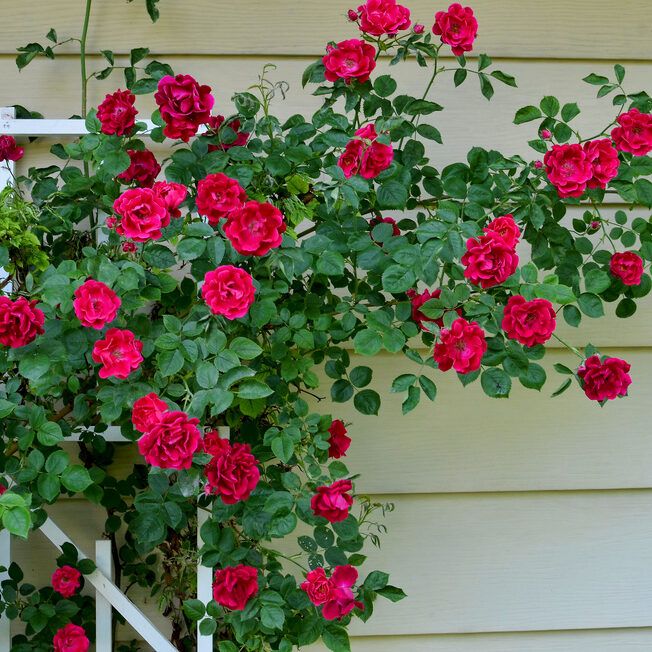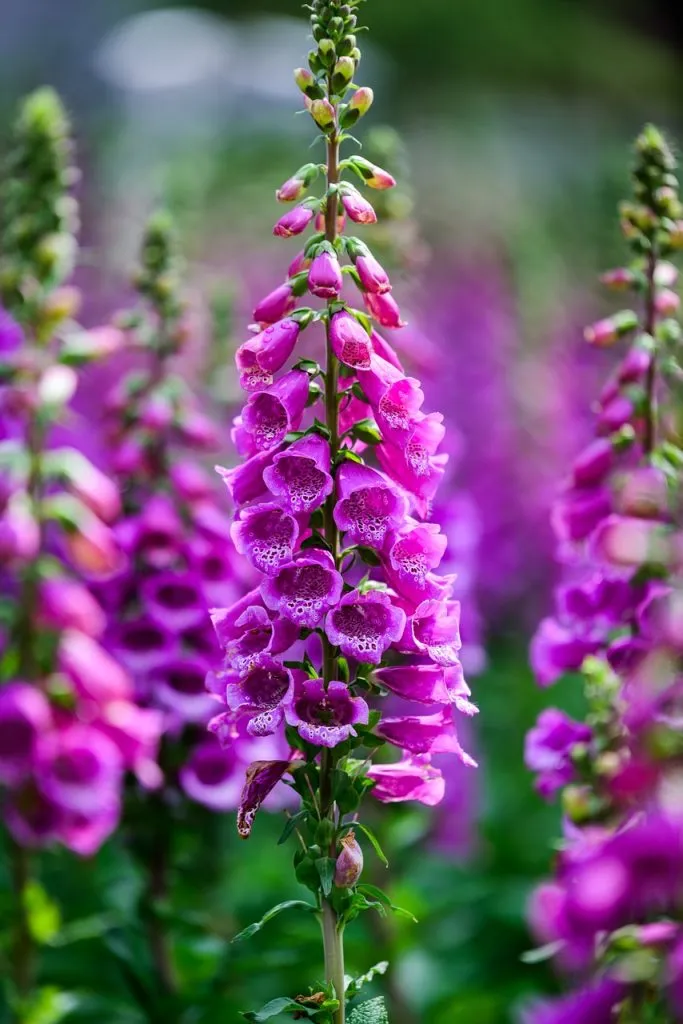10 Best Plants for Fence Lines: Enhancing Your Outdoor Space
Creating an attractive and functional outdoor space often involves making the most of fence lines. Whether you’re looking to camouflage a chain-link fence, soften a wooden barrier, or add vertical interest to your garden, choosing the right plants can transform your fence from a mere boundary into a stunning feature. This comprehensive guide explores 15 of the best plants for fence lines, offering insights into their characteristics, care requirements, and how to incorporate them into your landscape design.
Climbing Beauties: Vertical Accents for Your Fence
Climbing Roses: A Romantic Touch

Climbing roses are a classic choice for fence lines, offering romance and fragrance to any garden. Unlike true climbing plants, roses produce long canes that can be easily trained along a fence. This versatility allows gardeners to create stunning vertical displays of color and texture.
To successfully grow climbing roses along your fence:
- Choose a sunny location with well-draining, rich soil.
- Install support structures or ties to guide the canes as they grow.
- Prune regularly to maintain shape and encourage blooming.
Climbing roses come in a variety of colors and sizes, making them suitable for both formal and cottage-style gardens. Their blooms can add a soft, billowing effect to rigid fence lines, creating a beautiful contrast.
Clematis: The Queen of Vines

Clematis is often referred to as the queen of vines, and for good reason. These stunning climbers produce an abundance of showy flowers in a wide range of colors and forms. Clematis climbs by wrapping its leaf stems around support structures, making it an excellent choice for adorning fences.
When planting clematis along your fence line:
- Provide a sunny location for the vine’s upper growth, but keep the roots cool and shaded.
- Use a trellis or wire support system to help the plant climb the fence.
- Choose varieties that complement your fence style and garden design.
Clematis can be combined with other climbing plants, such as roses, for a layered and dynamic effect. Their ability to bloom in different seasons, depending on the variety, ensures long-lasting interest along your fence line.
Coral Honeysuckle: A Native Beauty

For those seeking a native plant option, coral honeysuckle (Lonicera sempervirens) is an excellent choice. This twining vine offers tubular coral-red blooms that attract hummingbirds and other pollinators. Unlike its invasive exotic cousins, coral honeysuckle is well-behaved in the garden.
To incorporate coral honeysuckle into your fence line:
- Plant in full sun and average, well-draining soil.
- Provide a support structure or allow the vine to naturally weave through fence slats.
- Prune as needed to maintain desired shape and size.
Coral honeysuckle’s spring flush of flowers, followed by sporadic blooming throughout the season, adds consistent interest to your fence line. Its ability to attract wildlife enhances the ecological value of your garden.
Shrubs and Hedges: Creating Privacy and Structure
Mophead Hydrangea: Voluminous Blooms

Mophead hydrangeas (Hydrangea macrophylla) offer large, showy blooms that can add a touch of magic to any fence line. These shrubs are particularly effective when planted along open-style fences, where their voluminous flowers can peek through the slats.
To successfully grow mophead hydrangeas along your fence:
- Choose a location with partial to full shade and rich, well-draining soil.
- Consider the mature size of the shrub when spacing plants.
- Adjust soil pH to influence flower color – more acidic soil for blue flowers, less acidic for pink.
Mophead hydrangeas not only provide beautiful blooms but also offer lush foliage that can help soften harsh fence lines. Their ability to change flower color based on soil pH adds an element of customization to your garden design.
Holly: Year-Round Interest

Holly (Ilex species) is an excellent choice for creating year-round structure and interest along fence lines. With its evergreen foliage and bright red berries, holly can break up the monotony of long, solid fences while providing habitat for birds.
When incorporating holly into your fence line design:
- Choose a variety that suits your space and climate zone.
- Plant in full sun to part shade with well-draining, rich soil.
- Consider using a mix of holly varieties for added texture and visual interest.
Holly’s versatility allows it to be used in formal hedges or as standalone specimens along a fence. Its dense growth habit makes it an excellent choice for creating privacy screens or windbreaks.
Abelia: Graceful and Low-Maintenance

Abelia is a versatile shrub that works well along solid fences, offering both evergreen foliage and fragrant blooms. Its arching branches and small leaves create a softer, more natural look compared to more rigid hedge plants.
To use abelia effectively along your fence line:
- Plant in full sun to partial shade with well-draining soil.
- Space plants according to their mature size to create a seamless hedge or a more naturalistic grouping.
- Prune lightly to maintain shape and encourage dense growth.
Abelia’s long blooming period attracts pollinators, adding movement and life to your fence line. Its ability to thrive in a wide range of soil pH levels makes it a low-maintenance option for many gardeners.
Perennials and Annuals: Adding Color and Texture
Hollyhocks: Cottage Garden Charm

Hollyhocks (Alcea rosea) are quintessential cottage garden plants that can add vertical interest and old-world charm to fence lines. Their tall spikes of colorful blooms make them perfect for planting along the back of flower borders or directly against fences.
To successfully grow hollyhocks along your fence:
- Choose a sunny location with rich, well-draining soil.
- Provide support for taller varieties to prevent them from falling over.
- Plant seeds in consecutive years to ensure continuous blooming, as hollyhocks are typically biennials.
Hollyhocks’ ability to self-seed means they can create long-lasting, colorful displays along your fence line with minimal effort. Their variety of colors allows for creative combinations that complement your fence and overall garden design.
Foxglove: Vertical Drama

Foxgloves (Digitalis purpurea) add vertical dimension to the garden with their stunning floral spikes. These biennial or short-lived perennials create a dramatic effect when planted en masse along fence lines.
To incorporate foxgloves into your fence line plantings:
- Choose a location with partial shade and moist, well-draining soil.
- Allow plants to self-seed for continuous displays in subsequent years.
- Combine with lower-growing plants to create a layered effect.
Foxgloves not only add visual interest but also attract pollinators to your garden. Their ability to thrive in partially shaded areas makes them ideal for fence lines that don’t receive full sun.
Cosmos: Airy Elegance

Cosmos (Cosmos bipinnatus) offer an airy, elegant addition to fence lines with their delicate foliage and long-lasting blooms. These annuals are perfect for softening rigid fence structures and adding movement to the garden.
To use cosmos effectively along your fence:
- Plant in full sun with average, well-draining soil.
- Sow seeds directly in the garden or use transplants for earlier blooms.
- Allow plants to self-seed for a naturalized look in subsequent years.
Cosmos’ ability to bloom for extended periods makes them an excellent choice for providing consistent color along fence lines. Their light, feathery foliage can help create a sense of depth and softness in the garden.
Conclusion
Selecting the right plants for your fence line can transform your outdoor space, creating a harmonious blend of structure and natural beauty. Whether you opt for climbing vines, structural shrubs, or colorful perennials and annuals, the key is to choose plants that complement your fence style and overall garden design. By considering factors such as sunlight, soil conditions, and maintenance requirements, you can create a stunning fence line that enhances your landscape and provides year-round interest. Remember to experiment with different combinations and don’t be afraid to let your creativity flourish along with your plants.






